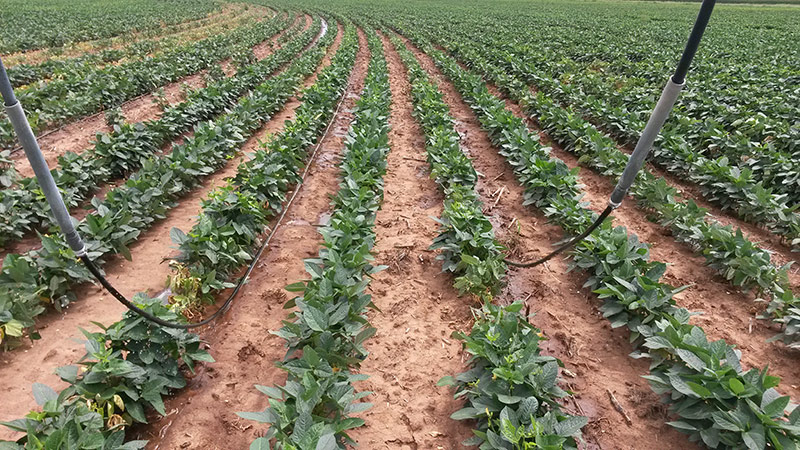An irrigation method that uses special piping systems and equipment to deliver low-pressure water to the irrigated area and slowly drip into the root soil of the crop. The drip irrigation technique was first used in Israel, which is a desert country, lacking water, using drip irrigation technology. The water saving rate will reach over 99% in the future.
Advantages of drip irrigation systems
1. The effective utilization rate of water is high: under drip irrigation conditions, the irrigation water moistens part of the soil surface, which can effectively reduce the inefficient evaporation of soil moisture. At the same time, since drip irrigation only wets the soil near the root of the crop, the soil moisture content in other areas is low, thus preventing the growth of weeds. The drip irrigation system does not produce surface runoff, and it is easy to grasp the precise water application depth, which is very water-saving.
2. Low ambient humidity: After drip irrigation, the soil roots are well permeable. By injecting fertilizer into the water, sufficient water and nutrients can be provided to make the soil moisture in a stable and low suction state that meets the crop requirements. Ground evaporation in the irrigation area. It is also small, which can effectively control the humidity in the protected area, greatly reduce the frequency of occurrence of pests and diseases of crops in the protected area, and reduce the application rate of pesticides.
3. Improve the quality of crop products: Since drip irrigation can supply water and fertilizer in a timely manner, it can improve the yield of agricultural products while improving the yield of agricultural products, so that the commodity rate of agricultural products in protected areas is greatly improved and the economic benefits are high.
4. Drip irrigation has strong adaptability to topography and soil: since the dripper can work within a large working pressure range and the dripper has a uniform outflow, drip irrigation is suitable for undulating plots and different types of soil. At the same time, drip irrigation can also reduce cultivating and weeding, and will not cause ground soil compaction.
5. Save water and labor, increase production and increase income: Because water does not move in the air during irrigation, does not wet the foliage, and there is no surface evaporation outside the effective wet area, so the amount of water directly lost to evaporation is the least; easy to control the amount of water, no ground Runoff and deep leakage of soil. Therefore, it can save 35%-75% of water compared with sprinkler irrigation. It has opened up new avenues for water conservancy in mountainous areas with few water sources and water shortages. Because the plants do not supply sufficient water, the weeds are not easy to grow, so the disturbance of crops and weeds competing for nutrients is greatly reduced, and the weeding work is reduced. As the root zone of the crop can maintain the best water supply status and fertilizer status, it can increase production.

